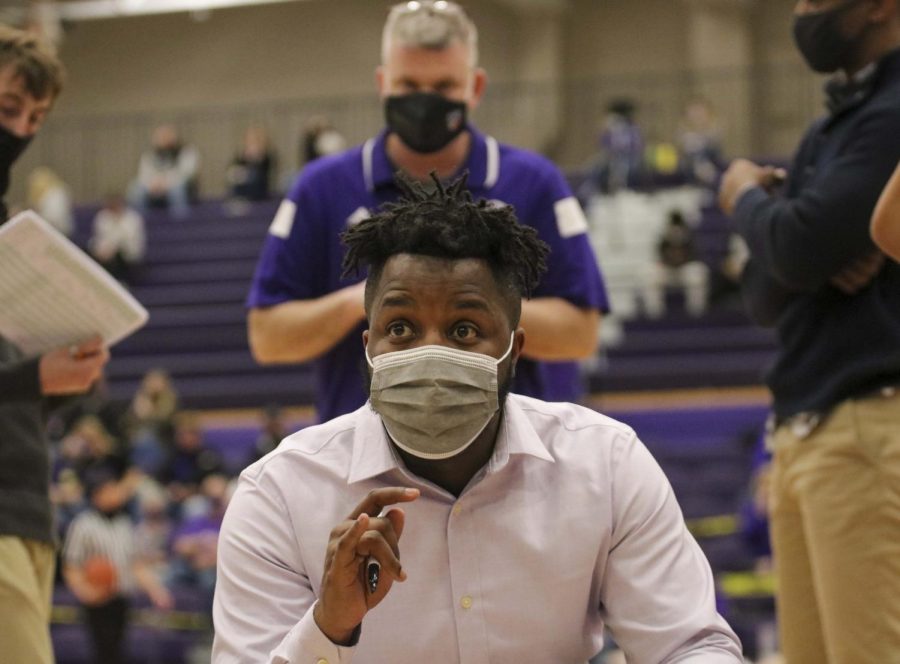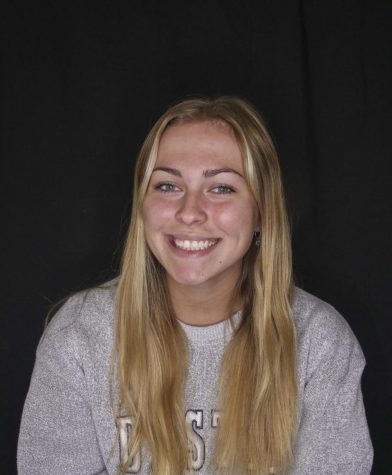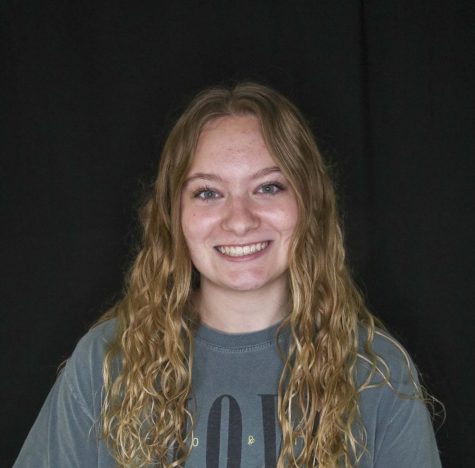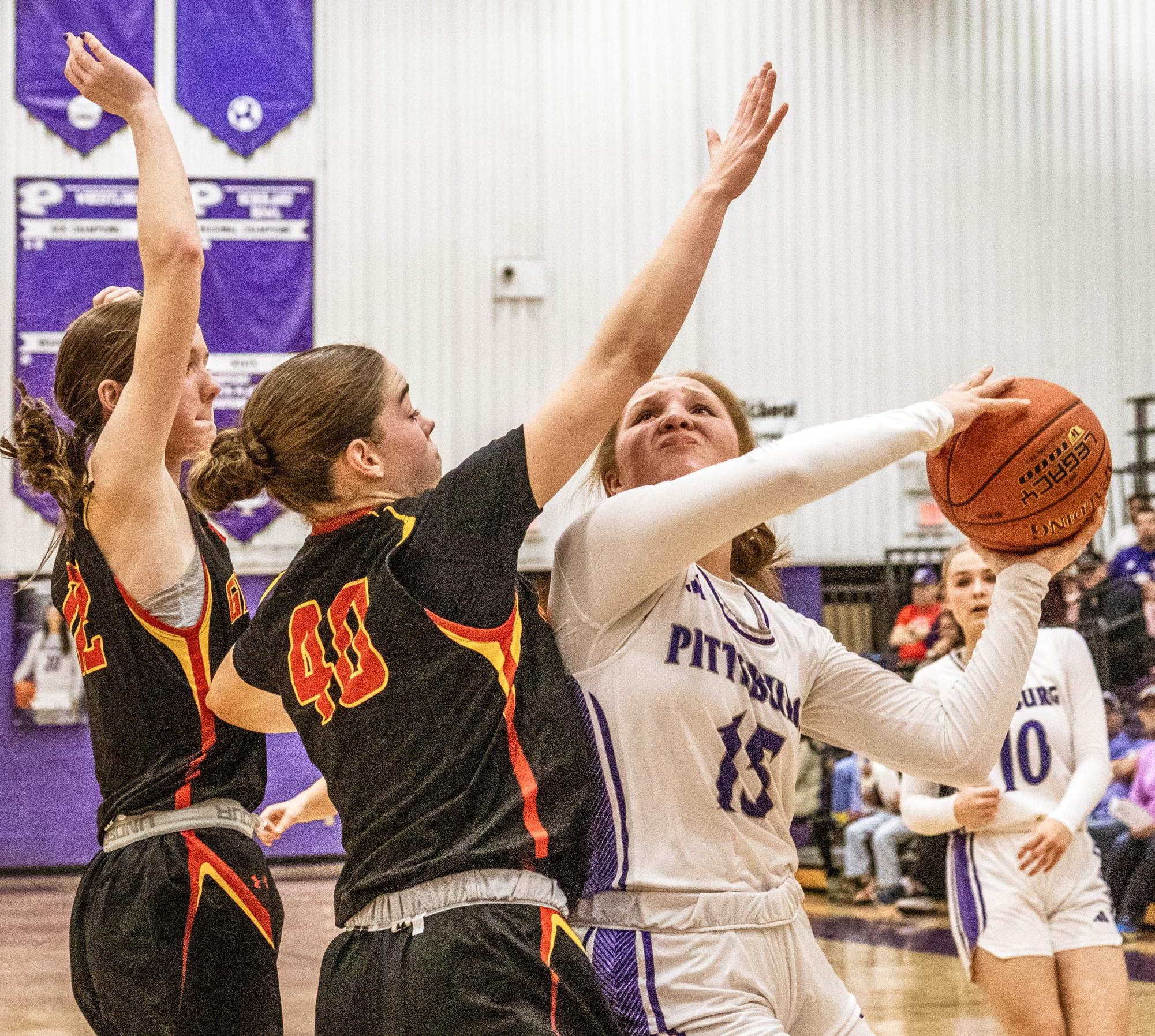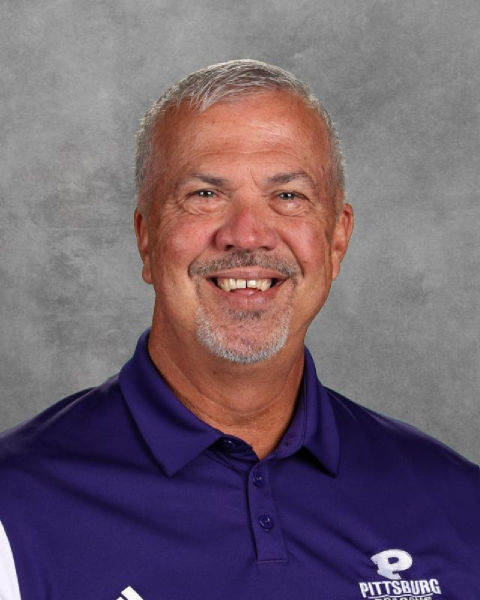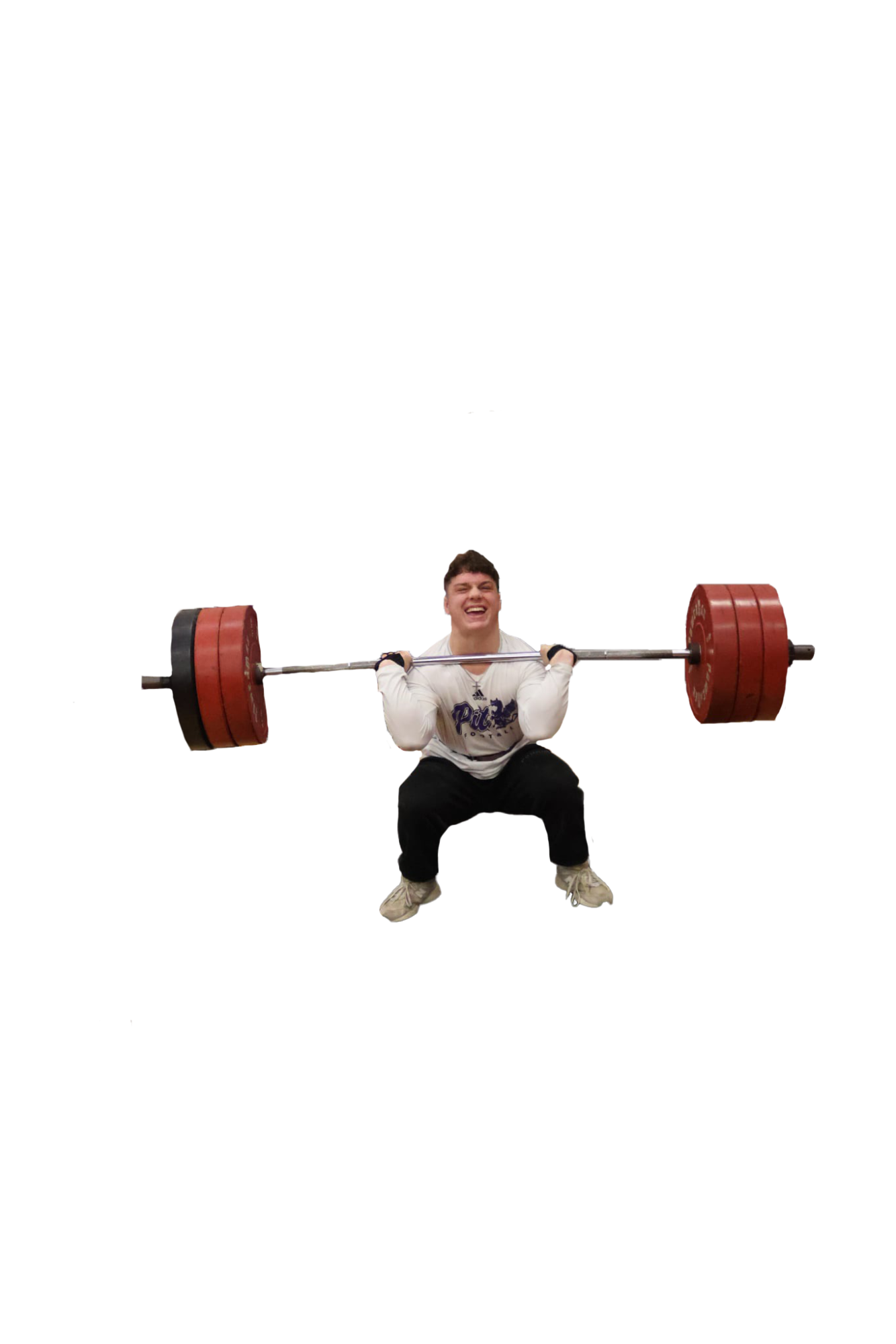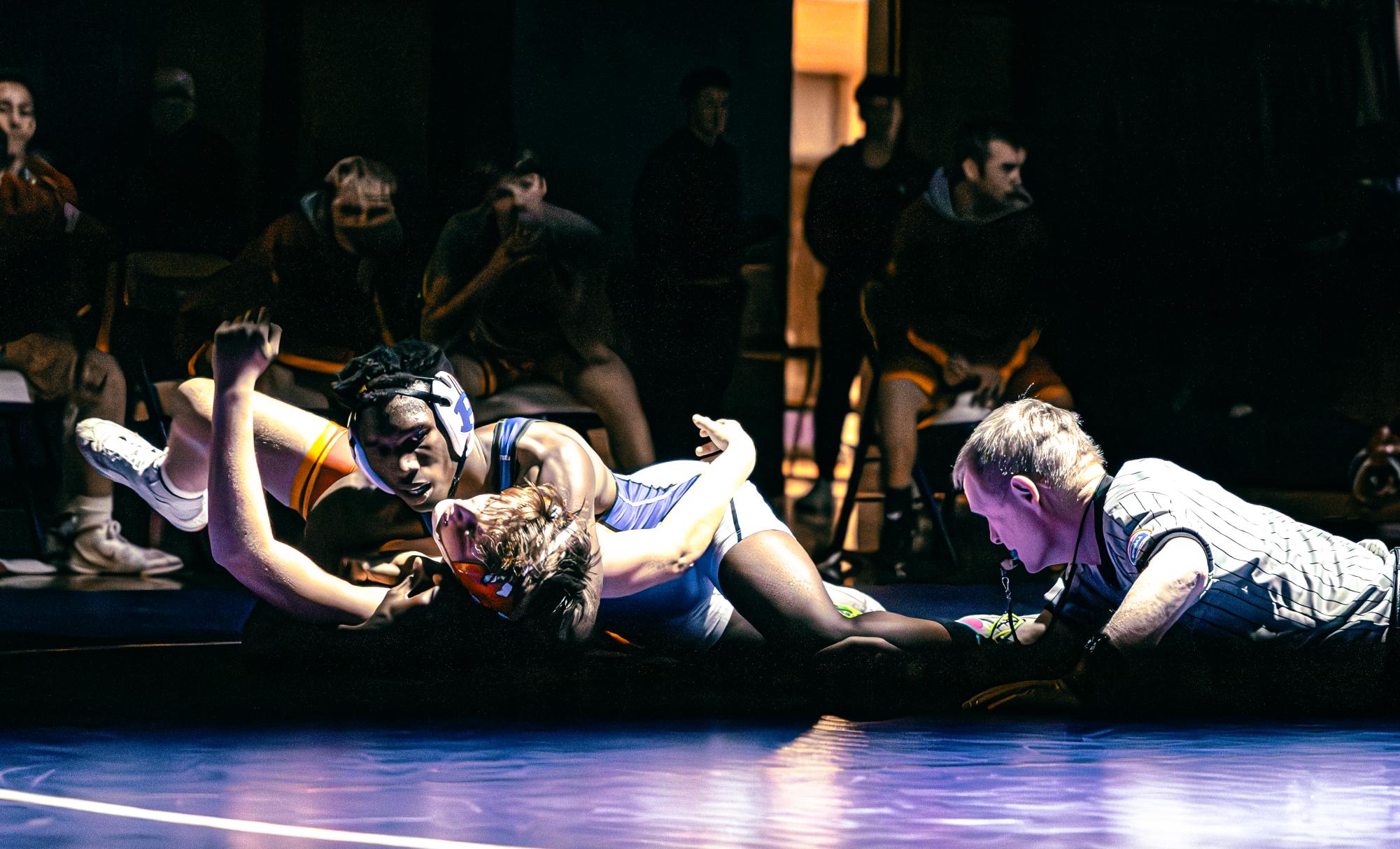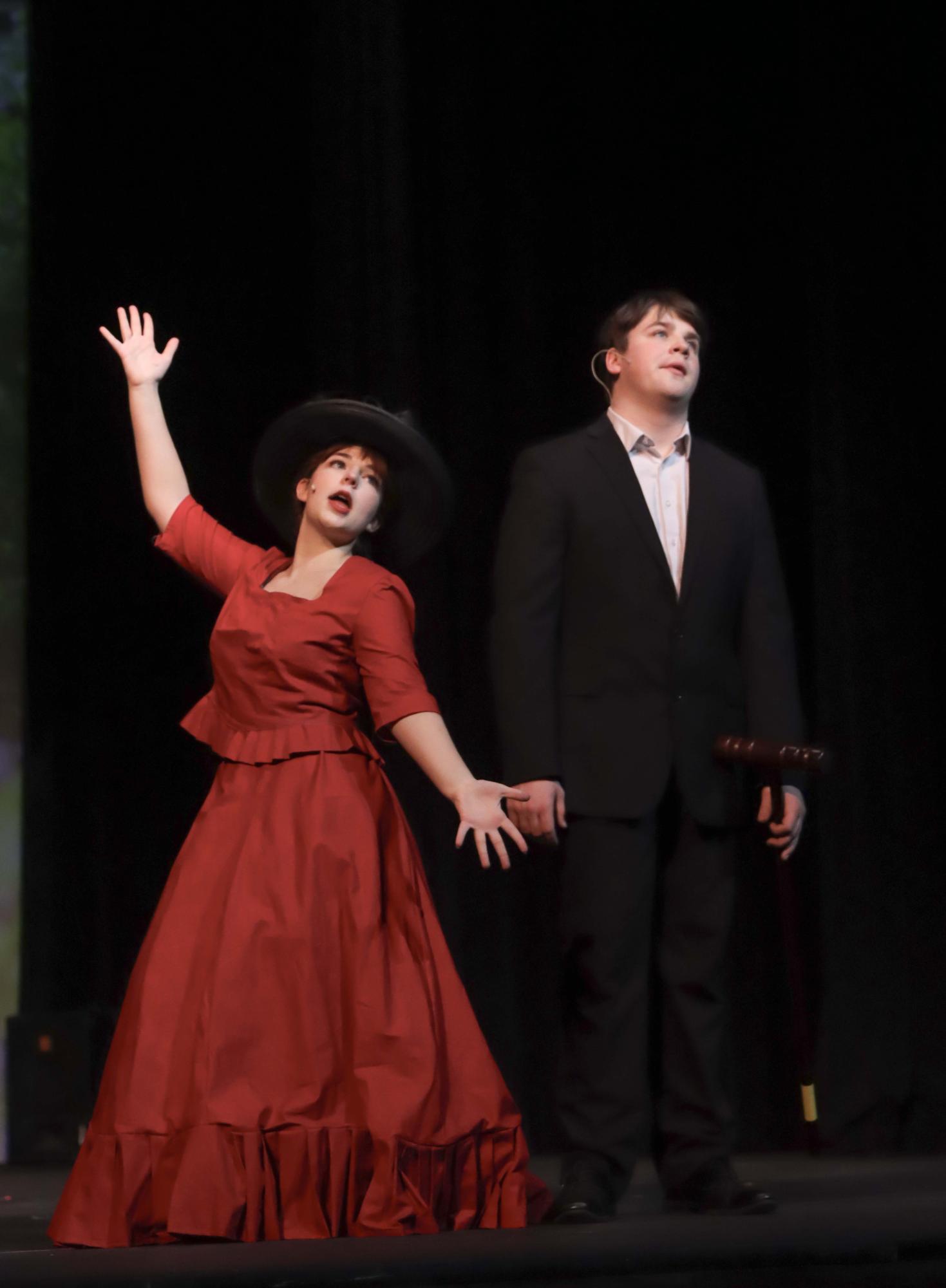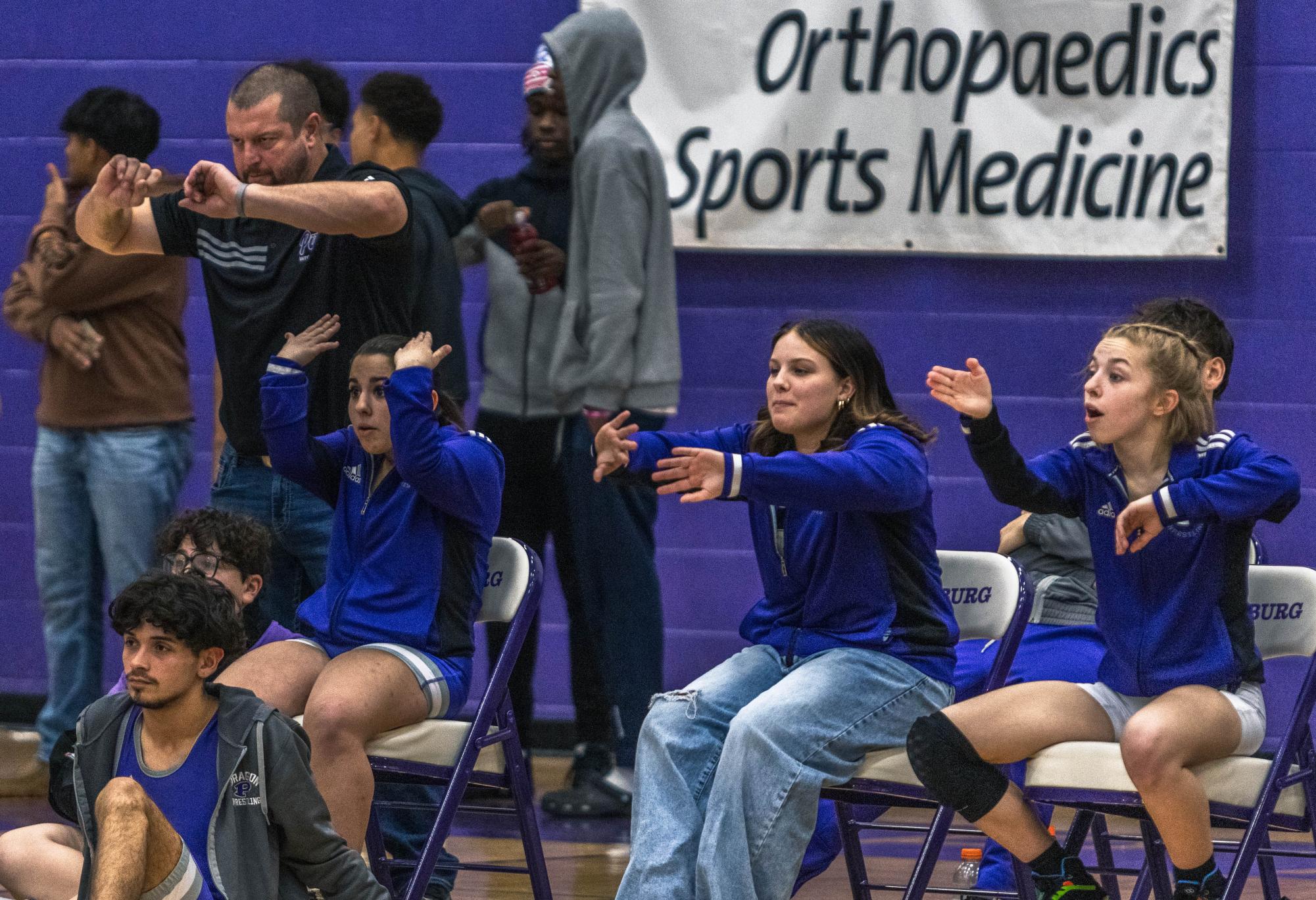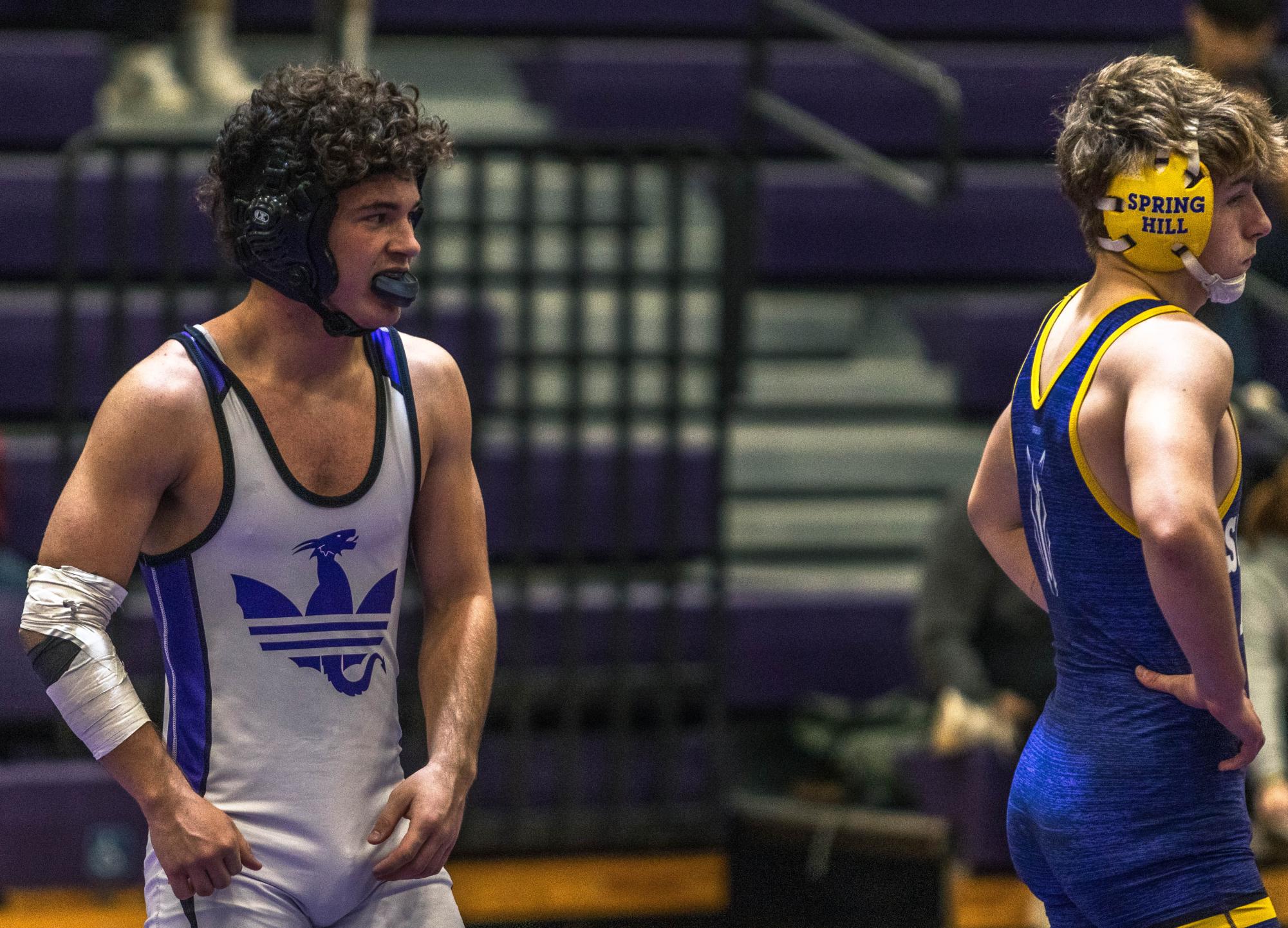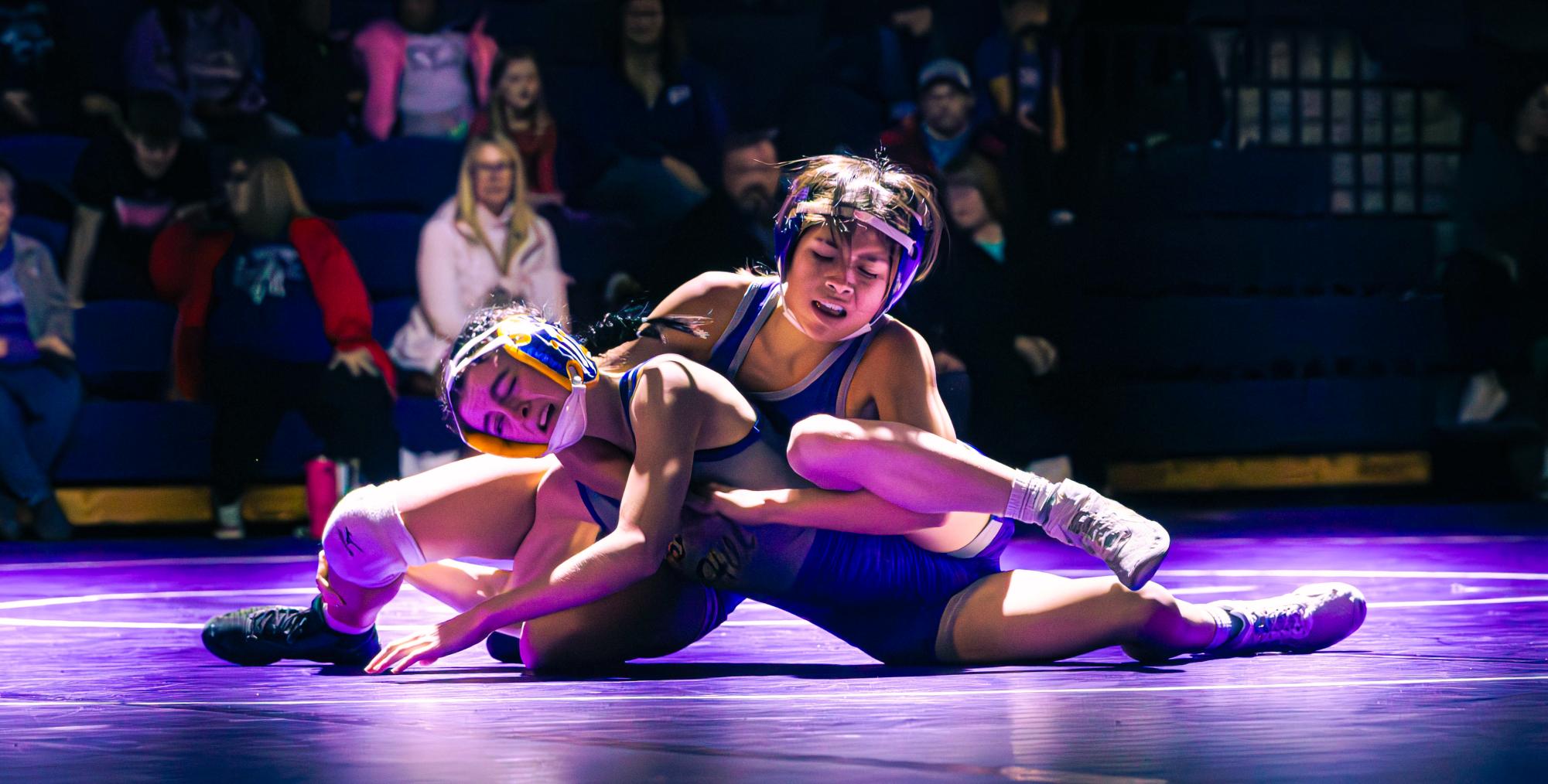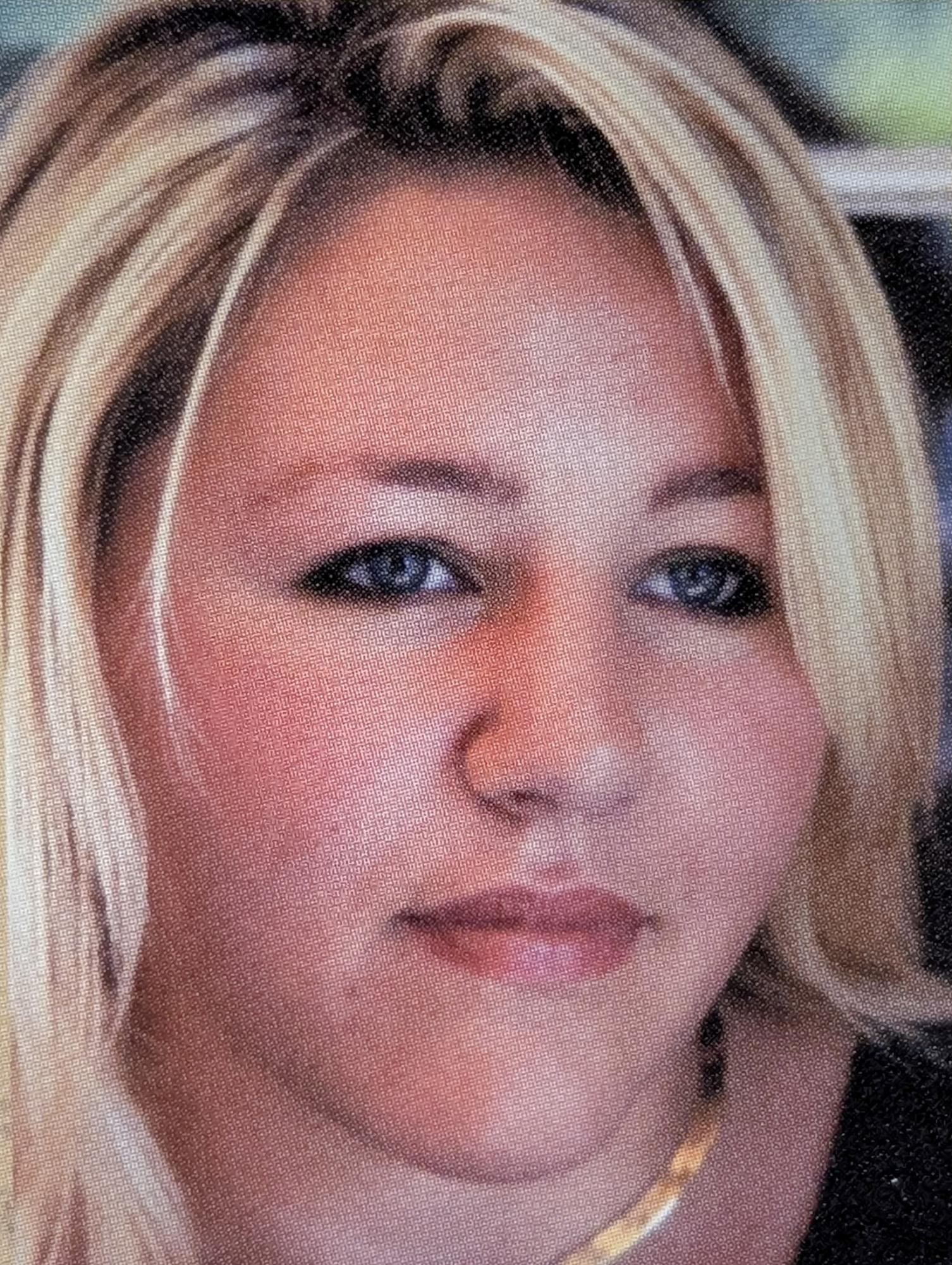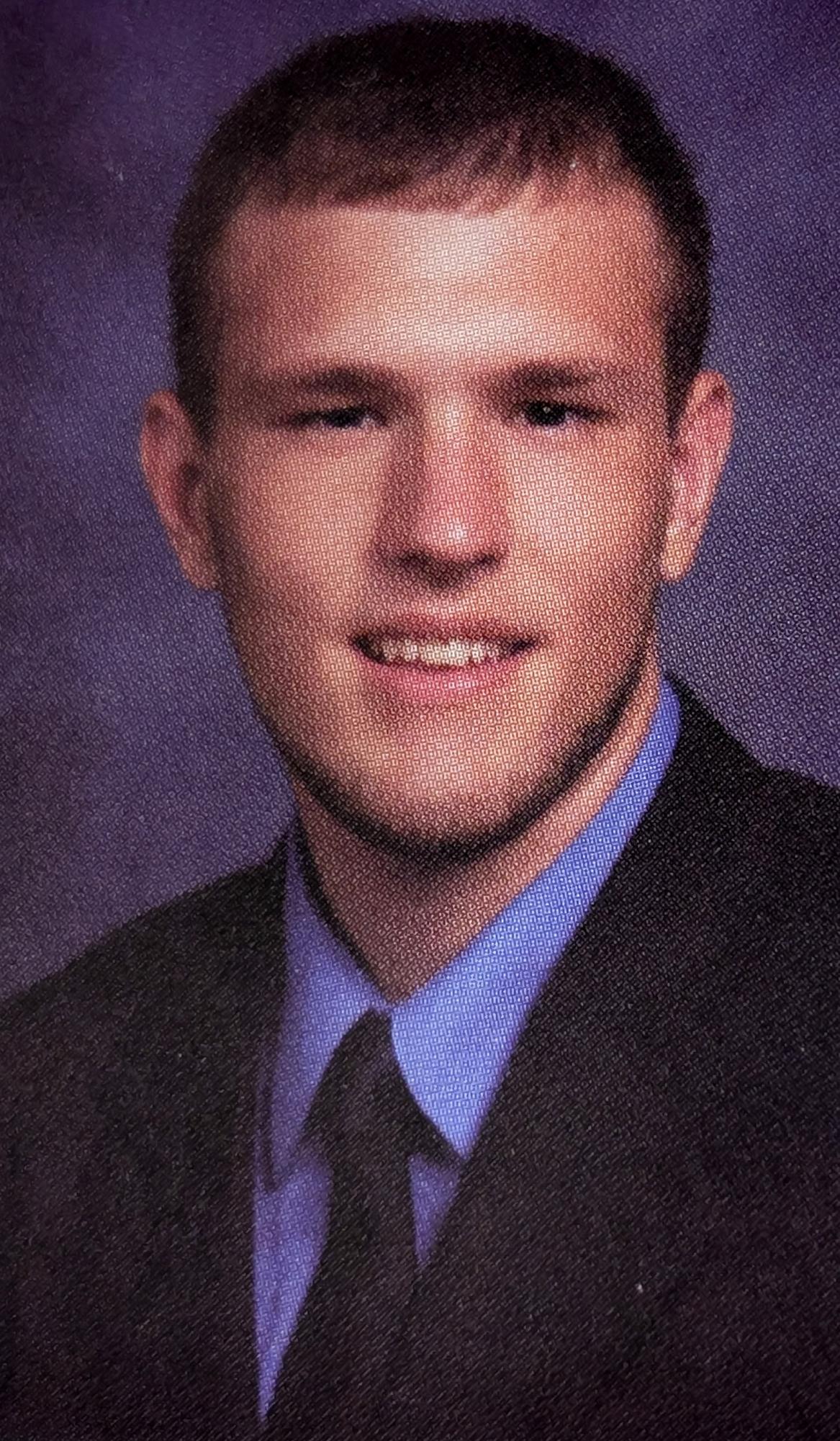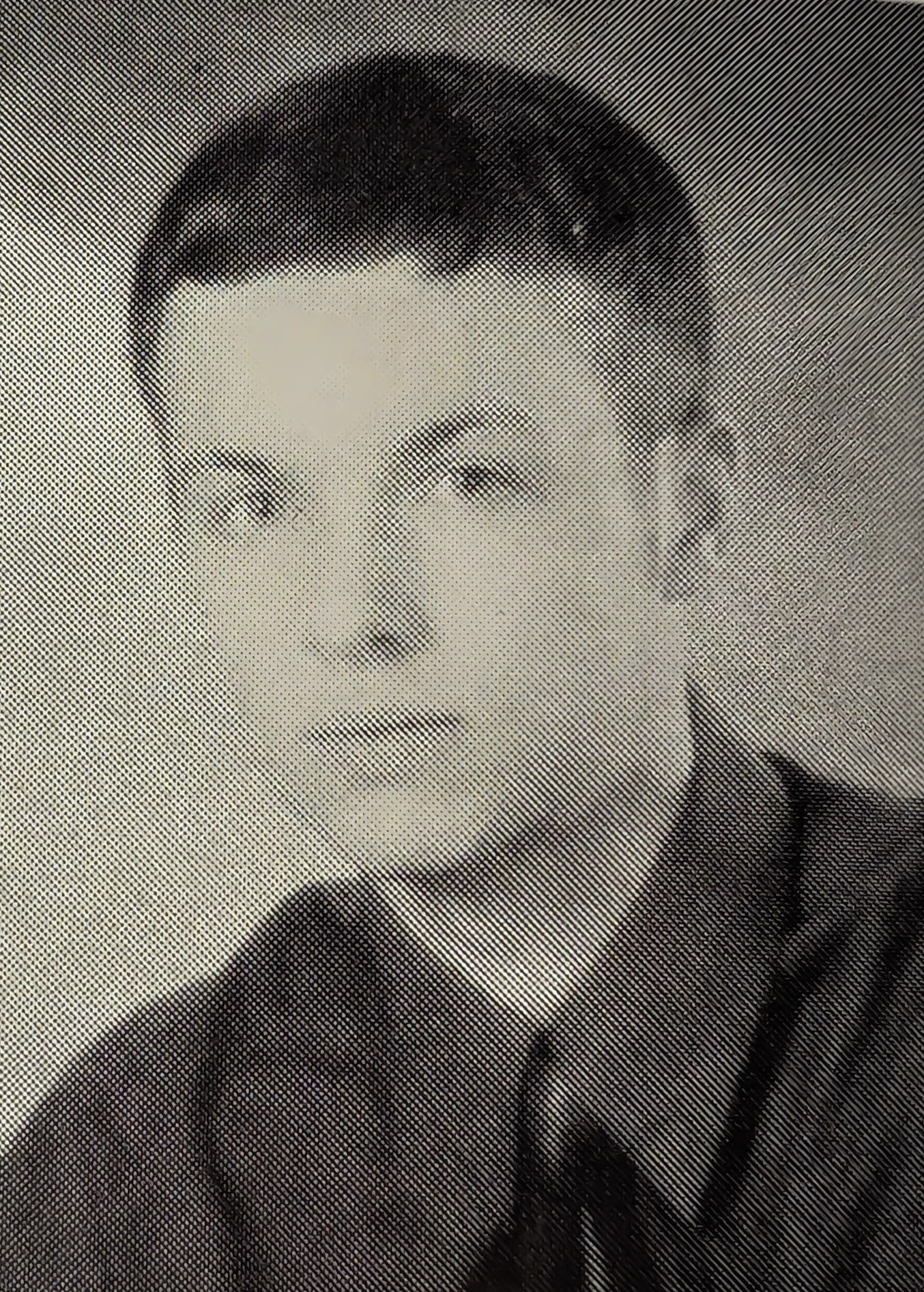A step in the right direction: SEK sports has diverse coaching staff
Photo by: Francisco Castaneda
Head coach Jordan Woods discusses a play during time out of the first round of substate against Blue Valley Southwest. The Dragons won and hosted Spring Hill in the substate championship game on Saturday, March 6.
August 24, 2021
When LC Davis moved to Fort Scott from his predominantly black Kansas City school, he was met with a wave of white coaches, white teachers and white peers. Growing up, he never had a coach that resembled him.
Now, as a wrestling coach and person of color at Pittsburg High School, Davis hopes to give African-American athletes a role model who looks like them.
On Dec. 9, Davis posted on Facebook the ratio of African-American high school head coaches to athletes in the surrounding areas.
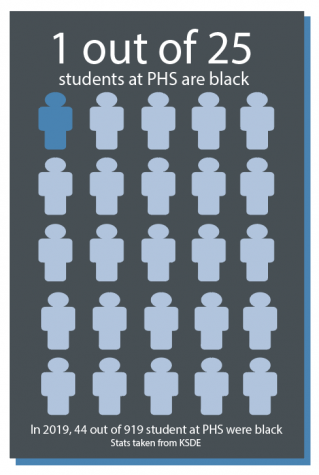
In total, there are six head coaches of color in the area, including Pittsburg’s Davis and boys basketball head coach Jordan Woods. Alongside Davis and Woods, are Fort Scott’s Gary Floyd, Pechone Stepps and Bo Graham, as well as Darvin Willard from Paola.
“I grew up in Kansas City where I went to mostly all black schools. But then, I went to school in Fort Scott and that kind of spurred the post that I made,” Davis said. “Most of the black coaches in the area graduated from Fort Scott High School.”
Davis believes having racial diversity in coaching could benefit young athletes.
“It is awesome that in this small community of southeast Kansas, where there isn’t a high black population, that we still have quite a good representation of black coaches,” Davis said. “That speaks volumes of USD 250, that speaks volumes of our community and it is great for our younger generation to be able to see that and to strive for that.”
Davis has been coaching wrestling for 15 years, and this is his third year as head wrestling coach at PHS. Woods, on the other hand, has been a coach at PHS for 11 years, with this being his first season as head coach. Like Davis, Woods also grew up lacking African-American coaches and role models.
“I never had a coach growing up who looked like me,” Woods said. “Hopefully, I inspire a few kids along the way. I always try to do the right thing for them so they are successful in the future, with sports and with life.”
The other African-American coaches in the SEK graduated from Fort Scott like Woods and Davis did. All but one, wrestling head coach Darvin Willard of Paola, now coach at their past high school.
“I’m not even sure how many minority coaches there are in wrestling, but having different skin color in whatever you do is good,” Willard said. “It only educates you about the other race. In today’s society, I believe that is what we need.”
In addition to a minimal number of black high school coaches around SEK, statistics prove that the lack of diversity is a trend in the modern sports world.
According to Forbes, people of color makeup 69% of players and 35% of assistant coaches in the National Football League. Yet, only two head coaches are black. Similarly, in the National Basketball Association, 82% of players are black, but there are only five coaches of color, according to Interbasket.
Davis says, this is a depiction of modern-day racism.
“I think minorities in general have a little harder time just because of the things that we have had to overcome,” Davis said. “Some people may be naive and think that [racism] isn’t still somewhat there, but I think it is still prevalent, it just isn’t near as bad as it was.”
In his sport, Woods strives to create a safe, all-inclusive atmosphere and sets reasonable expectations that any athlete can meet as long as they work hard.
“Just because you come from a different situation, the expectations and behaviors shouldn’t be any different. This gives equal opportunity to be successful when expectations are set high and there is an accountability piece with it,” Woods said. “I feel that with love and high expectations, all kids can be successful and want that in their lives.”
Although these coaches strive to create a welcoming environment, Davis realizes the obstacles some athletes still face.
“I do want to be realistic, there is a difference. There is some gap that we need to fill, and not just for minorities, it’s in everything,” Davis said. “Anything where someone is at a disadvantage should be addressed. I think everyone should get a fair shot.”
With more diversity in the athletic world, Davis thinks our society can become more educated and unified.
“Right now, there is a lot of separation of race and I would like to see people come together and not worry about skin tone,” Davis said. “Let’s spread more love. It’s just skin, it’s just a color. We’re all the same on the inside.”



